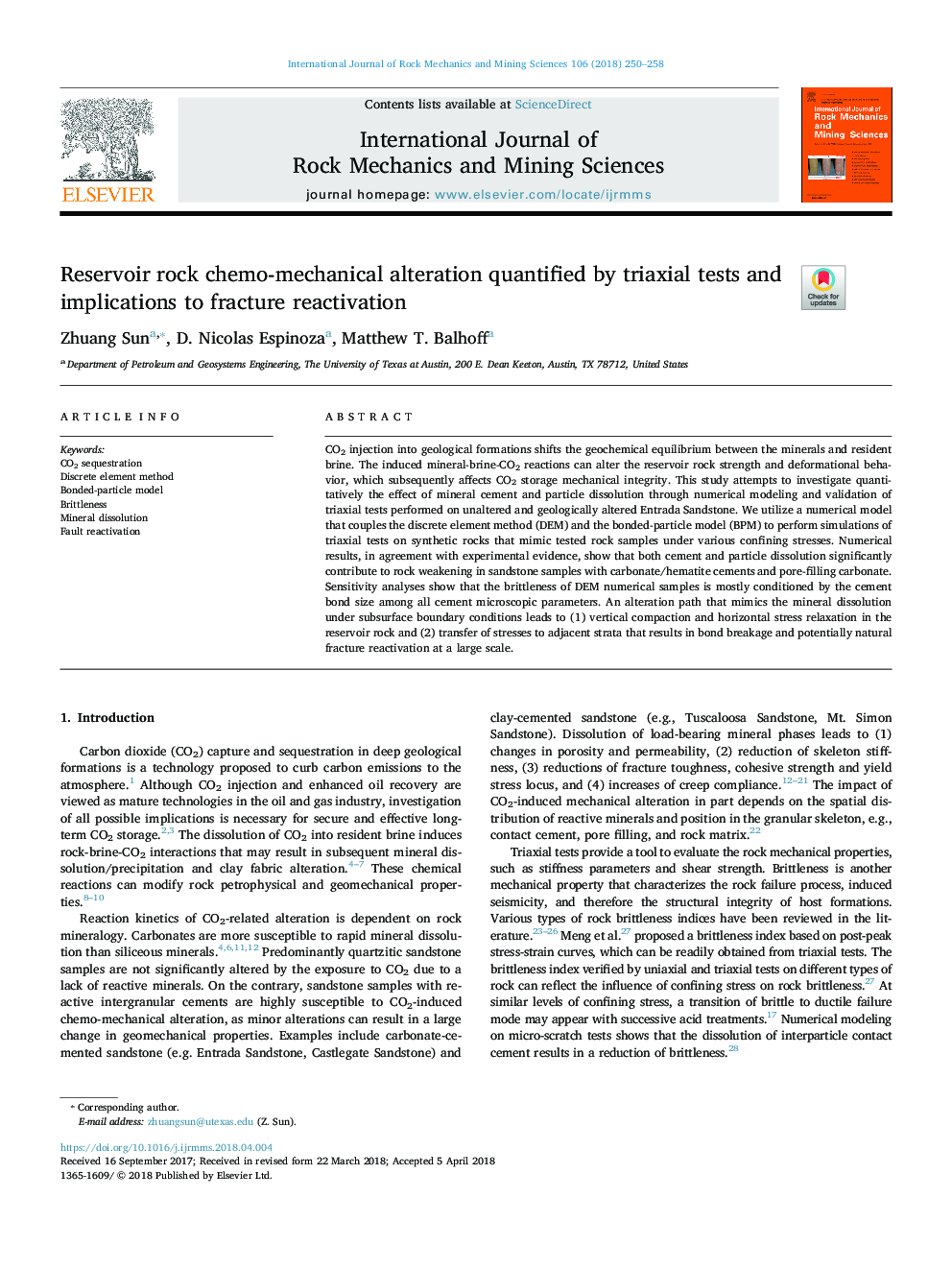| Article ID | Journal | Published Year | Pages | File Type |
|---|---|---|---|---|
| 7206212 | International Journal of Rock Mechanics and Mining Sciences | 2018 | 9 Pages |
Abstract
CO2 injection into geological formations shifts the geochemical equilibrium between the minerals and resident brine. The induced mineral-brine-CO2 reactions can alter the reservoir rock strength and deformational behavior, which subsequently affects CO2 storage mechanical integrity. This study attempts to investigate quantitatively the effect of mineral cement and particle dissolution through numerical modeling and validation of triaxial tests performed on unaltered and geologically altered Entrada Sandstone. We utilize a numerical model that couples the discrete element method (DEM) and the bonded-particle model (BPM) to perform simulations of triaxial tests on synthetic rocks that mimic tested rock samples under various confining stresses. Numerical results, in agreement with experimental evidence, show that both cement and particle dissolution significantly contribute to rock weakening in sandstone samples with carbonate/hematite cements and pore-filling carbonate. Sensitivity analyses show that the brittleness of DEM numerical samples is mostly conditioned by the cement bond size among all cement microscopic parameters. An alteration path that mimics the mineral dissolution under subsurface boundary conditions leads to (1) vertical compaction and horizontal stress relaxation in the reservoir rock and (2) transfer of stresses to adjacent strata that results in bond breakage and potentially natural fracture reactivation at a large scale.
Keywords
Related Topics
Physical Sciences and Engineering
Earth and Planetary Sciences
Geotechnical Engineering and Engineering Geology
Authors
Zhuang Sun, D. Nicolas Espinoza, Matthew T. Balhoff,
